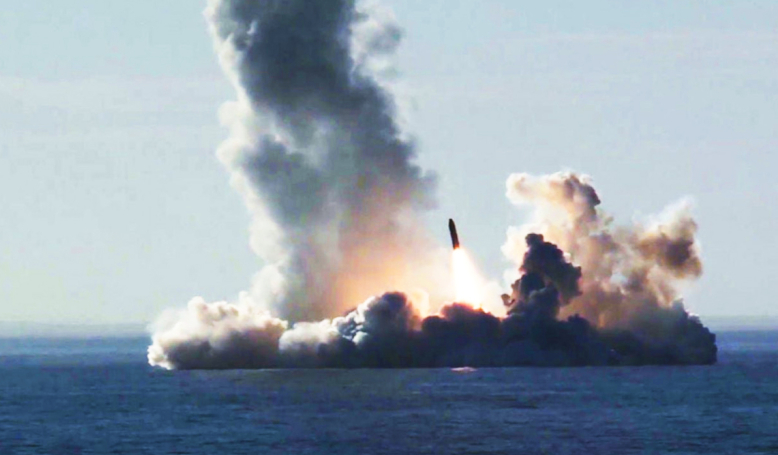Russia has fired an anti-satellite missile in a test of technology that the United States Space Command, established by President Trump, considers a threat to American orbital assets.
According to data released by staff at Peterson Air Force Base, Colorado, Russia conducted a test of its direct-ascent anti-satellite (DA-ASAT) missile system on Tuesday (15 December).
The system is designed to destroy satellites in low Earth orbit (LEO) and the test followed the country's on-orbit test manoeuvres of two satellites (COSMOS 2542 and COSMOS 2543) that "exhibited characteristics of a space weapon”, according to a US Space Command Statement.
In February, the Space Command observers spotted the Russian satellites following a US spy satellite, behaviour that Space Command Gen. John ‘Jay’ Raymond described at the time as "unusual and disturbing".
"Russia publicly claims it is working to prevent the transformation of outer space into a battlefield, yet at the same time Moscow continues to weaponise space by developing and fielding on-orbit and ground-based capabilities that seek to exploit US reliance on space-based systems," stated US Army Gen. James Dickinson.
"Russia's persistent testing of these systems demonstrates threats to US and allied space systems are rapidly advancing. The establishment of US Space Command as the nation's unified combatant command for space and US Space Force as the primary branch of the US armed forces that presents space combat and combat support capabilities to Space Command could not have been timelier. We stand ready and committed to deter aggression and defend our nation and our allies from hostile acts in space.”
The US says it is concerned by Russia's continued development and deployment of several types of ground-based and space-based ASAT weapons, describing the actions as contrary to Russia's diplomatic and public stance against the weaponisation of space.
Russia has demonstrated two completely different types of space weapons, the first a type of kinetic weapon which is a DA-ASAT system capable of destroying satellites in LEO and believed to have been tested multiple times.
If this weapon is tested on an actual satellite or used operationally, it would likely cause a large debris field that could endanger commercial satellites and irrevocably pollute the space domain.
The second type is a co-orbital ASAT, a space-based weapon system, which demonstrated an on-orbit kinetic weapon in 2017 and again in 2020.
In March 2018, Russia’s President Putin announced the development of a ground-based laser system for use by the Russian Space Forces, which the Russian military acknowledged as a "combat laser system”. The US says this pattern of behaviour would be considered potentially threatening in any other domain.
"Russia has made space a war-fighting domain by testing space-based and ground-based weapons intended to target and destroy satellites,” Dickinson added. “This fact is inconsistent with Moscow's public claims that Russia seeks to prevent conflict in space.
“Space is critical to all nations. It is a shared interest to create the conditions for a safe, stable, and operationally sustainable space environment. The demands on the space systems continue in this time of crisis where global logistics, transportation, and communications are key to defeating the Covid-19 pandemic,” he said.











